Hapag-Lloyd Cruises
History, Review, Itineraries, Ships, Deck Plans, News
Hapag-Lloyd Cruises fleet

Hanseatic Spirit
Current cruise: 17 days, one-way from Hamburg to FunchalHapag-Lloyd CruisesYear build 2021 / Age : 4 Passengers 199 - 230 
Hanseatic Inspiration
Current cruise: 19 days, one-way from Koror-Palau to NoumeaHapag-Lloyd CruisesYear build 2019 / Age : 6 Passengers 199 - 230 
Hanseatic Nature
Current cruise: 18 days, one-way from Belem to IquitosHapag-Lloyd CruisesYear build 2019 / Age : 6 Passengers 199 - 230 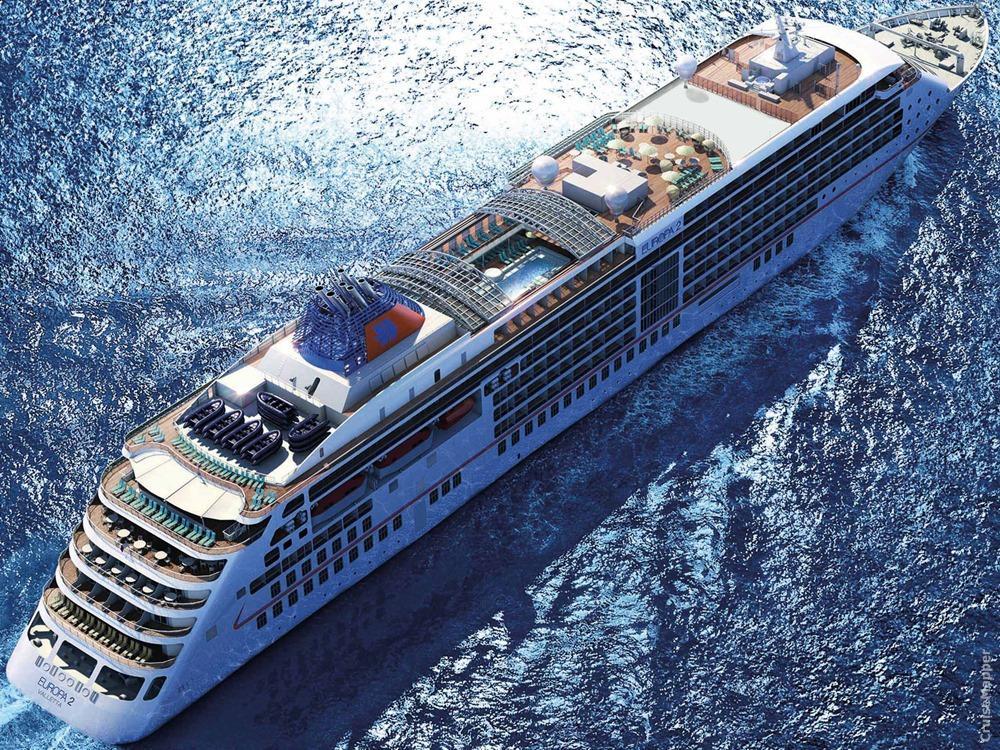
ms Europa 2
Current cruise: 18 days, round-trip Premiere Americas West Coast With Canada Los Angeles - Los AngelesHapag-Lloyd CruisesYear build 2013 / Age : 12 Passengers 516 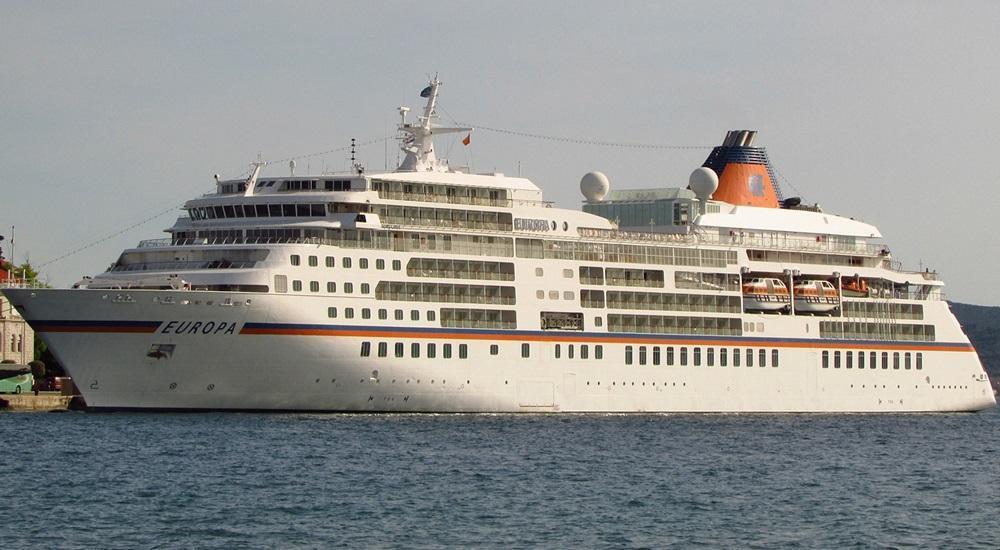
ms Europa
Current cruise: 13 days, one-way from Funchal to Monte CarloHapag-Lloyd CruisesYear build 1999 / Age : 26 Passengers 408
Review of Hapag-Lloyd Cruises
Hapag-Lloyd Cruises (officially Hapag-Lloyd Kreuzfahrten, hl-cruises.com) is a premium travel brand based in Hamburg, Germany, and is part of TUI AG (via its subsidiary TUI Cruises GmbH). Between 2017 and 2020, Hapag-Lloyd Cruises was fully owned by Hapag-Lloyd AG (a German-Chilean shipping company, one of the world’s oldest), which is currently ranked the world’s 5th largest container shipping line in terms of fleet capacity.
On February 7, 2020, TUI AG (also known as TUI Group) announced that Hapag-Lloyd Cruises (valued at approximately EUR 1.2 billion / USD 1.36 billion in 2020) would become part of TUI Cruises (a 50-50 joint venture between TUI and RCCL-Royal Caribbean). The contract was signed in Hamburg on February 7, and the cash transaction from RCCL (~EUR 700 million) was completed on July 6, 2020.
The company’s current CEO/Managing Director is Isolde Susset, who succeeded Julian Pfitzner in June 2024.
The Hanover, Germany-based TUI AG (a British-German multinational) is currently ranked as the world’s largest leisure and travel company. It was founded in 1923 and was named "Preussag AG" until 2002. TUI Group's companies specialize in hospitality and tourism services worldwide, with a portfolio that includes passenger airlines, cruise shipping (shipowner), package vacations, hotels and resorts, travel agencies, and retail shops.
Company History/Changes
The Hapag-Lloyd company was founded in 1970 through the merger of two of Germany’s oldest steamship companies: "Hamburg-Amerikanische Packfahrt-Actien-Gesellschaft" (Hapag) and "Norddeutscher Lloyd." Both companies were established in the 1840s for shipping freight and passengers across the Transatlantic route between Germany and the USA.

On July 12, 2017, TUI AG sold its remaining 8.5 million shares in Hapag-Lloyd AG, raising about EUR 244 million. The operation was an open-market block trade (Accelerated Book Building) with a guaranteed minimum price close to the day’s market closing. Prior to this trade (in March 2017), TUI AG had sold a total of 6 million Hapag-Lloyd shares in individual open-market transactions. By disposing of all its Hapag-Lloyd shares, TUI AG completed the corporation's non-core business disposal program initiated after the merger of TUI AG and TUI Travel PLC in December 2014. The proceeds were used to support TUI’s tourism business (hotel brands and cruise ships).
In 2017, Hapag-Lloyd Cruises reported a record average daily rate of EUR 594 (per person, per day), marking a 2.6% increase from 2016. The company also reported the highest-ever customer satisfaction and quality ratings. The company’s average daily ticket prices increased as follows: 2011 (EUR 399), 2012 (EUR 420), 2013 (EUR 450), 2014 (EUR 536), 2015-2016 (EUR 579), and 2017 (EUR 594).
For FY2018 (fiscal year), TUI Group's earnings from its three cruise brands—TUI, Marella, and Hapag-Lloyd—rose by 10.7% to EUR 901.9 million. The company's turnover was EUR 324 million, a 26.8% increase over 2017. The Group's average daily rates increased as follows: EUR 178 (TUI, up from EUR 173), EUR 141 (Marella, up from EUR 131), and EUR 615 (Hapag-Lloyd, up from EUR 594).
Since July 2020, Hapag-Lloyd's fleet exclusively uses LS-MGO (low sulfur marine gasoil) with a maximum sulfur content of 0.1%.
Hapag-Lloyd Cruising Experience
Hapag-Lloyd Cruises offers high-end luxury travel experiences, featuring:
All of Hapag-Lloyd's cruise ships offer both in-port and onboard experiences, ranging from zodiac expeditions to luxurious settings. Vessels are positioned at the higher end of the market, with fares generally on the higher side. Hanseatic and Bremen are expedition ships with the highest ice-class rating (E4), allowing year-round navigation in the Antarctic and Arctic regions. Bremen is rated 4 stars, while Hanseatic is rated 5 stars, offering upgraded enrichment, cuisine, and larger cabins.
The launch of the first Hapag-Lloyd newbuild, Europa 2, took place in May 2013. The project was aimed at the ultra-luxury market and attracted younger, more active, and less luxury-focused travelers, including families (with facilities for children of all ages). MS Europa 2 is the brand’s most contemporary and stylish ship, featuring dynamic and sophisticated entertainment options, from a jazz club to a kitchen studio (for cooking classes). Its appeal lies in attracting younger cruisers, including families, who are less focused on luxury.
Hapag-Lloyd's all-suite ships Europa 1 and Europa 2 provide the largest space-per-guest ratio of any cruise ships currently on the market. All Europa 2 staterooms have balconies. The company has also marketed MS Europa 2 as its "bilingual ship," designed to appeal to international customers with enhanced activities aimed at English-speaking passengers.
New Ships
Next, Hapag-Lloyd’s new expedition cruise ship design is presented. Three Polar-Class vessels are currently under construction and scheduled for launch between 2019 and 2021: Hanseatic Inspiration (October 2019), Hanseatic Nature (April 2019), and Hanseatic Spirit (2021).

The newbuilds are sister ships, each with a maximum capacity of 230 passengers (199 passengers on Antarctic cruises), 3 restaurants, an extensive wellness area, a water sports marina (aft), and a fleet of Zodiacs (large-capacity inflatable boats used for landings and shore excursions).
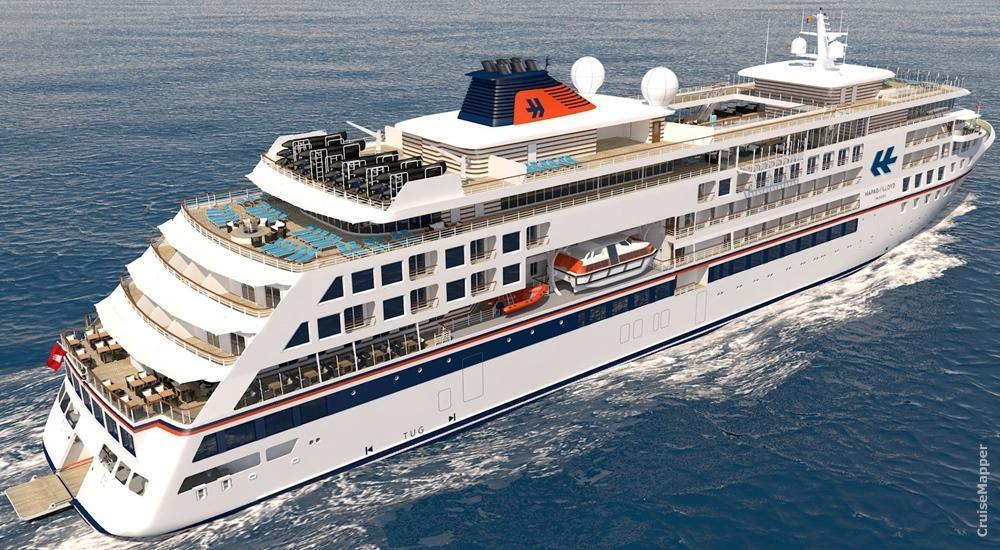
On July 3, 2018, VARD Holdings Ltd and Hapag-Lloyd Cruises signed a shipbuilding contract for the third vessel in the HANSEATIC series (Spirit). The new ship is scheduled for delivery in Q2 2021. All ships in the series have their hulls built by VARD Tulcea shipyard (Romania).
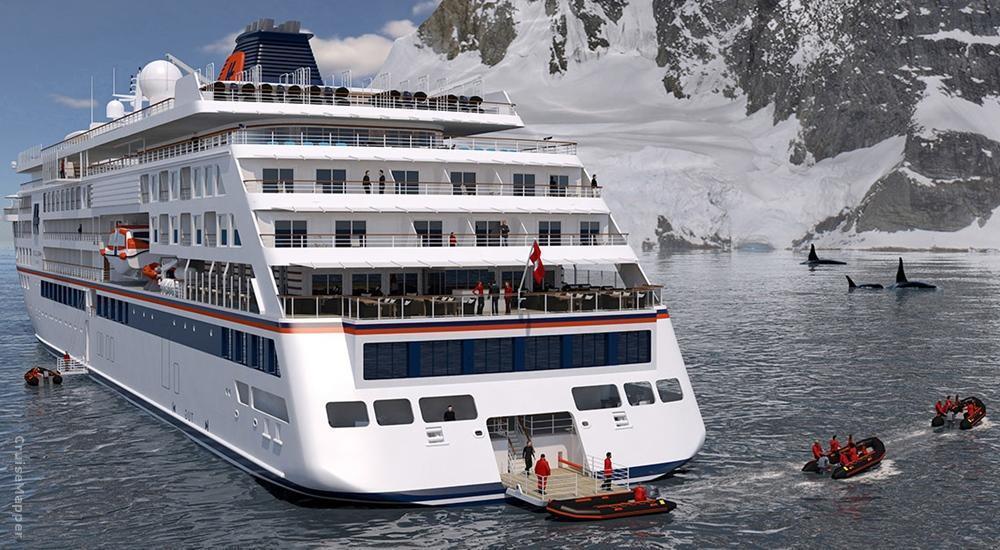
In late February 2019, Hapag-Lloyd introduced a user-friendly digital concept for onboard learning, never before seen on expedition vessels. The new "study wall" is available on the fleet’s three new Hanseatic ships (Inspiration, Nature, Spirit).
The innovative touchscreen technology (screen size 6x1.8 m / 20x6 ft) allows passengers to research information and various topics related to the ship's current cruise itinerary destinations. The digital Study Wall was developed over a 2.5-year period through a partnership with two German companies based in Hamburg: Intermediate Engineering GmbH and mpg ErlebnisRaumDesign GmbH.
Digital content (articles, biographies, photos, videos) is divided into five categories. Most of the information is provided by GEOMAR (Kiel, Germany), as well as by journalists, scientists, and experts. The Study Wall is located in the Knowledge Studio (Wissens Atelier / Deck 8). The research facility also includes four Study Seats (with touchscreens to explore the content), Study Posters (visual scientific explanations), and a dedicated area for microscope research.
In mid-August 2017, MS Bremen (now Seaventure/1990-built) received the "Polar Code" certificate, which allows the vessel to operate in polar regions. All its fleetmates were also due to receive the certificate by Hapag-Lloyd’s 2018 Arctic season. The Polar Code (adopted by IMO) contains regulations about the construction and onboard equipment of polar cruise vessels, as well as crew training requirements. In 2017, as part of the HL fleet's routine drydocks, all ships were brought in line with the Polar Code’s requirements. MS Bremen was scheduled to operate 3 Arctic cruises (2018-2019 season), including one Northeast Passage (summer 2018).
(Coronavirus Crisis) Passenger Shipping Pause 2020-2021
Due to the COVID-19 pandemic, Hapag-Lloyd suspended its entire fleet's passenger shipping operations by canceling all voyages with pre-scheduled departures between March 18, 2020, and May 2021.
HL cruise operations resumed in 2021 on May 24 (Hanseatic Inspiration/Baltic), July 9 (Hanseatic Nature/Norway), August 14 (MS Europa/Baltic from Hamburg), October 2 (Hanseatic Spirit/Asia-Japan), and October 3 (Europa 2/Canaries).
All affected bookings received full refunds, including for prepurchased HL packages and services. All current voyages were completed by March 21, 2020.
Itinerary of Hapag-Lloyd Cruises
Currently, Hapag-Lloyd offers an array of "high-end luxury" cruises for well-heeled travelers. The line's signature destinations include the Mediterranean, Northern Europe, the Caribbean, Asia, Australia, as well as expedition itineraries to Antarctica and Alaska (Northwest Passage).
The current Hapag-Lloyd cruise fleet includes the following vessels:
- ms Europa (1999)
- ms Europa 2 (2013)
- Hanseatic Inspiration (October 2019), Hanseatic Nature (April 2019), and Hanseatic Spirit (2021) are newbuilds/sister ships, each with a max passenger capacity of 230 (199 on Antarctic cruises), 3 restaurants, an extensive wellness complex, and an aft water sports Marina Platform.
On January 15, 2019, Hapag-Lloyd announced that MS Bremen had been sold to Scylla Cruises and would be delivered to the new owner in May 2021. As of 2019, Scylla owned 31 riverboats, most of which are chartered to various European cruise tour companies.
Along with the introduction of expedition cruise catalogs for the 2020-2021 season, Hapag-Lloyd Cruises announced that low-pollutant MGO (marine gas oil) would be exclusively used on all routes of its expedition ships (Hanseatic Nature and Hanseatic Inspiration) starting July 2020. Hanseatic Spirit, joining the fleet in 2021, is also expected to use this fuel.
The use of low-sulfur fuels in Antarctica has been mandatory for several years, and Hapag-Lloyd Cruises has already voluntarily used marine gas oil in sensitive regions such as the Arctic and Kamchatka. The low-pollutant fuel has a sulfur content of just 0.1%. In addition, the new expedition ships are not only equipped with an SCR catalytic converter that reduces nitrogen oxide emissions by nearly 95%, but also feature cold ironing capabilities.
The Hapag-Lloyd Cruises fleet is also equipped with seawater desalination technology that produces clean water, along with biological sewage treatment plants. The ships' bow thrusters and stabilizers run on bio-petroleum, making them more environmentally friendly.
Highlights from the 2021 routes of Hapag-Lloyd's expedition fleet include:
- Hanseatic Inspiration sails to Antarctica 10 times, including a 23-day itinerary from Tierra del Fuego to South Africa through the Antarctic. The journey stretches from Cape to Cape (Cape Horn to the Cape of Good Hope).
- A change of travelers in Goose Bay, northern Canada, is a first for Hapag-Lloyd Cruises, as expeditions have never started and ended there before. This stop allows for the combination of two spectacular expedition destinations—the icy landscapes of Greenland and the remote region of Labrador.
- Travelers can experience the Arctic on several cruises aboard Hanseatic Inspiration. The South Africa voyage is another first, where Hanseatic Inspiration will, for the first time, circumnavigate "the cape of wild animals," sailing from Cape Town to Walvis Bay.
- Hanseatic Inspiration also offers expeditions in Europe, where passengers can explore the Azores, the British Isles, and the coastlines of the Baltic and North Seas.
Two ships from Hapag-Lloyd Cruises built for the international market, ms Europa 2 and Hanseatic Inspiration, are scheduled to restart bilingual sailings in January 2022. The five-star-plus ms Europa 2 will ring in the New Year in the Indian Ocean, visiting Reunion Island, Mauritius, and Seychelles, before heading on to South Africa, Cape Verde, and the Canaries, with stops at Madeira and the Azores.
For international passengers aboard the expedition cruise ship Hanseatic Inspiration, destinations in 2022-2023 include the Great Lakes of North America; Antarctica and the Arctic; South America (including the Panama Canal and Chilean Fjords); Cape Verde, and the Canary Islands.
Northwest Passage Cruises
Hapag-Lloyd was the world's first cruise line to offer a Northwest Passage Cruise itinerary. In 2011, MS Bremen became the first-ever cruise ship to cross the Passage, from Kangerlussuaq, Greenland to Nome, Alaska. In 2012, MS Hanseatic (now RCGS Resolute) made a full transit with a 25-day itinerary, departing from Nome, AK (on August 14) and ending in Reykjavik, Iceland (on September 7).
The Faroe Islands Cruise Boycott (Animal Cruelty)
In mid-July 2016, Hapag-Lloyd became one of three cruise ship companies (along with Disney and AIDA) to ban the Faroe Islands (a Danish territory) as a destination on their North European itineraries.
The boycott was a response to the island nation's traditional mass slaughter of pilot whales each year. The protected by Denmark, gruesome practice is called “Grindadrap Grind.” Locals use motorboats to drive a pod of whales into a harbor, where the defenseless animals are dragged to shallow water and brutally slaughtered by locals armed with knives (16-19 cm / 6-8 inches long), while their families cheer them on. The killing party even rips baby whales from their mothers.
The Faroe Islands, with a population of about 50,000, kills over 1,000 pilot whales annually. You can see the cruise ship schedule for Torshavn, the Faroes' most visited port. All cruise lines with scheduled visits to the Faroes are accused of supporting these brutal whaling practices. Whaling is still officially permitted in "civilized" countries like Japan, Norway, and Iceland, which together kill over 2,000 whales each year and trade in whale products.
Hapag-Lloyd's response to the "Faroese Pilot Whaling Act" is to continue to avoid the islands, as the law permits the culling or massacre of pilot whales. The act also empowers local authorities to imprison (for up to two years) those who impede these whaling activities, despite international condemnation.
Sea Shepherd and Greenpeace are among the largest organizations taking direct action against the "Faroese Pilot Whaling Act." Most of the haunting images of slaughtered whales in a sea of blood come from these organizations.
Hapag-Lloyd Cruises related cruise news
- Accidents

Finnish icebreakers aid Hanseatic Spirit through frozen Bothnian Bay
The expedition cruise vessel Hanseatic Spirit, operated by Hapag-Lloyd Cruises, encountered heavy sea ice while navigating off the coast of Kemi...
April 2, 2025 - Cruise Industry

Hapag-Lloyd Cruises completes landmark Antarctic semi-circumnavigation
Hapag-Lloyd Cruises has completed a significant maritime expedition with the semi-circumnavigation of Antarctica aboard HANSEATIC Inspiration. The...
March 8, 2025 - Cruise Industry

Hapag-Lloyd Cruises unveils modernized brand identity for 2025
Hapag-Lloyd Cruises, a company with 130+ years of expertise in luxury and expedition cruising, is set to enter 2025 with a revitalized brand identity...
December 30, 2024 - Cruise Industry

66 Degrees Expeditions China starts polar cruises with Seaventure ship in May 2025
Chinese companies Guangdong Travel Holding Group and Guangdong Port and Shipping Group have launched what they claim is China's first polar...
September 16, 2024 - Cruise Industry

Refurbished HANSEATIC Inspiration ship begins Baltic and North Sea voyage
Following a scheduled docking period in Kaiserdock II at the Lloyd Werft shipyard in Bremerhaven, the HANSEATIC Inspiration has returned to the water...
June 5, 2024 - Cruise Industry
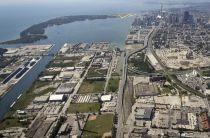
PortsToronto achieves record cruise season with 45 visiting ships
The Port of Toronto Cruise Ship Terminal witnessed an unprecedented cruise season, welcoming 45 ships and hosting 18,000 guests in the Canadian city...
January 6, 2024 - Cruise Industry
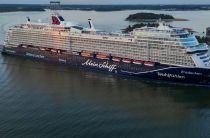
TUI Cruises celebrates 15th anniversary at sea
TUI Cruises, a partnership between TUI AG and RCG/Royal Caribbean Group, has celebrated its 15th anniversary at sea. The Hamburg-based company has...
May 14, 2023 - Cruise Industry

Seychelles' 2022-2023 cruise season starts with MS Europa 2 ship
Seychelles' cruise season 2022-2023 will commence with the arrival of Hapag-Lloyd's ship MS Europa 2 expected in Port Victoria (Mahe Island) on...
October 12, 2022 - Cruise Industry

Hapag Lloyd’s cruise ship MS Europa 2 to sail West Coast America (Hawaii-South America) in 2023-2024
For season 2023-2024, Hapag-Lloyd Cruises is welcoming bookings from the UK, with a program of 28 itineraries to choose from. These include premiere...
August 21, 2022 - Cruise Industry

The busiest cruise season ever begins for Corsica Ports with Hapag-Lloyd's ms Europa
On April 10, Hapag-Lloyd Cruises' ship ms Europa made her way to the port of Bastia (Corsica France) for her first call of 2022. The busiest cruise...
April 17, 2022 - show more news
